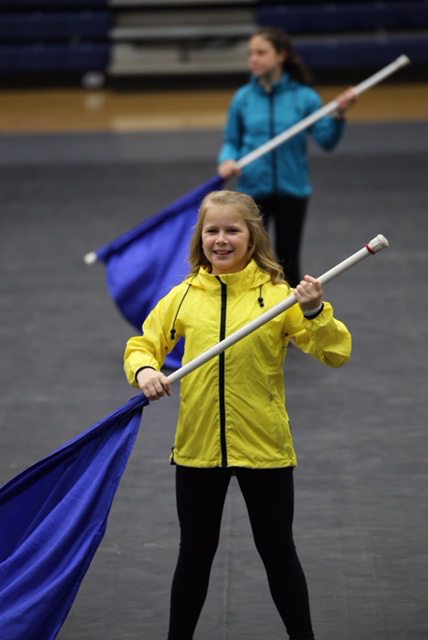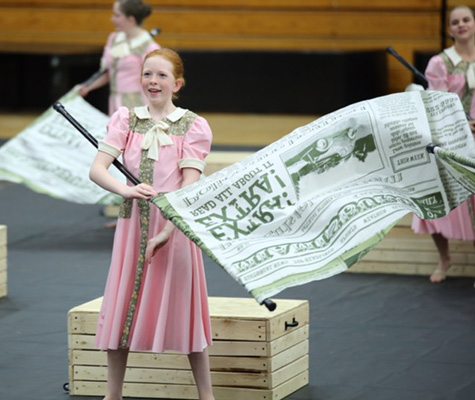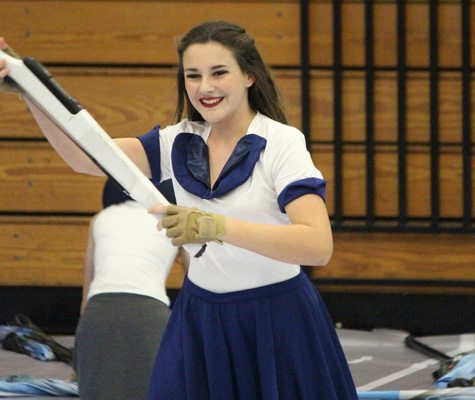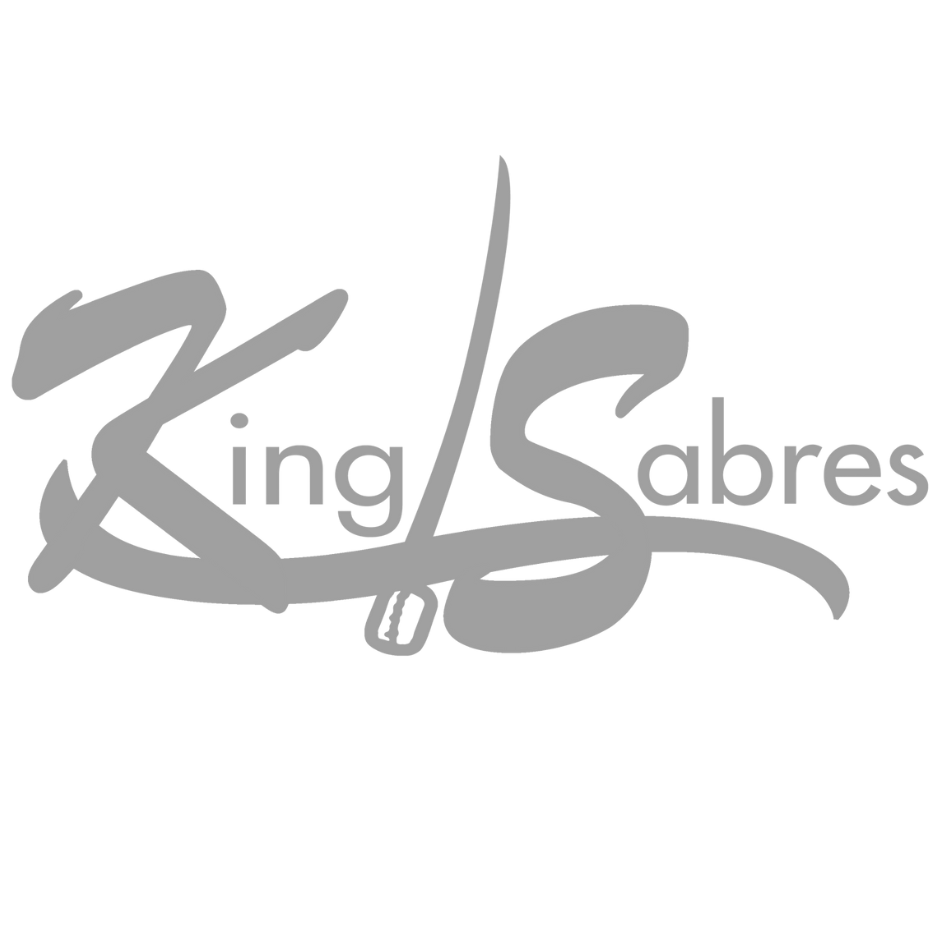By Hannah Corson
World class color guards don’t become great overnight. Many factors go into making these groups the powerhouses that they are including hours of practice, good work ethic, and passion for the activity. For some, these things start in high school, but for others, the work starts as early as the first grade.
 Feeder programs play a large role in the success of many world class programs. These programs are designed to give students a kick start in their color guard career in order to better prepare them for the more competitive groups. Feeders for high school color guards can be found in both elementary schools and middle schools and they can be competitive or non-competitive. To better understand how feeder programs can benefit a world class color guard, I spoke to the directors of several programs with feeders.
Feeder programs play a large role in the success of many world class programs. These programs are designed to give students a kick start in their color guard career in order to better prepare them for the more competitive groups. Feeders for high school color guards can be found in both elementary schools and middle schools and they can be competitive or non-competitive. To better understand how feeder programs can benefit a world class color guard, I spoke to the directors of several programs with feeders.
Danielle Gladeau is the co-director of the Miamisburg School’s elementary and Scholastic A color guards along with Suzy Deis. Her affiliation with the school’s feeder programs began in 2002 when she became a member of the first Miamisburg elementary color guard. Because of her long time involvement with the program, Gladeau has been able to see how the feeders have impacted the world class color guard over the years, and how the feeders have developed competitively.
Gladeau stated that although Miamisburg had a strong world class color guard long before the creation of an elementary or Scholastic A program, she has seen some noticeable differences since developing feeders. For one, the students are more likely to take a risk. The level of comfort that the students develop after spending many years with the color guard leads to a confidence that can’t be shaken by being introduced to a new skill. Also, the sense of family has grown tremendously since the addition of feeder color guards. Gladeau states, “Some girls spend 12 years growing as members in the program and everyone becomes so close and supportive of each other. The girls also see the older members as their role models and they always have someone to look up to that supports them in their journey.” These role models are not only found in the world class group, but also within the feeders themselves.
 The oldest member of the Scholastic A color guard, Camryn Stiver, feels that she has found a home in the Miamisburg color guard. Because she is in the tenth grade and the youngest Scholastic A members are in the fifth grade, she believes that it is her duty to make them feel comfortable. “I don’t want them to feel like I’m a big scary high schooler, I want them to see me as a friend, as someone they can talk to, or ask for advice,” she says. It is this sense of community that allows the Scholastic A color guard to excel competitively.
The oldest member of the Scholastic A color guard, Camryn Stiver, feels that she has found a home in the Miamisburg color guard. Because she is in the tenth grade and the youngest Scholastic A members are in the fifth grade, she believes that it is her duty to make them feel comfortable. “I don’t want them to feel like I’m a big scary high schooler, I want them to see me as a friend, as someone they can talk to, or ask for advice,” she says. It is this sense of community that allows the Scholastic A color guard to excel competitively.
In recent years, the feeder color guard has bumped up in class twice. In 2015, the decision was made to challenge the students by moving to the Scholastic Regional A class. When they rose to the occasion, they moved once again to Scholastic A class in 2016. For the upcoming WGI season the Miamisburg Scholastic A color guard will be attending the Indianapolis Regional and WGI World Championships.
Tarpon Springs High School also has an established feeder program under the direction of Jennifer Barker. The feeder program includes two middle school color guards, one is a competitive Scholastic AA group and the other is a non-competitive group, and a Scholastic A class high school color guard. Barker first formed the middle school program eight seasons ago while she was a teacher for Tarpon Springs. Although she no longer teaches, she continues to serve the color guard as director and designer.
Because the middle school is also a Magnet Program, The Tarpon Springs Middle School Leadership Conservatory for the Arts, many students are involved in dance classes where they learn about winter guard. This creates interest in the program and allows for continuous growth in the feeders. Barker noted that the most significant change that she’s seen in the Tarpon Springs color guard since the addition of a feeder program is the amount of students who want to audition year after year. The fact that so many students have wanted to join has led to the creation of two middle school color guards. While one is competitive and one is not, this allows the majority of those who are interested to have the opportunity to learn and excel in the activity.
 For Tarpon Springs, the feeder programs aren’t primarily focused on developing skill as much as they are focused on developing work ethic, commitment, and mental stamina. Barker mentions, “Trying to get kids these days to commit and give their all is challenging. Starting them off at 10 or 11 years old helps instill into them real world lessons throughout the years that I’m with them. This prepares them for their four years with Jeannine Ford.” The students will enter the high school programs with basic technique skills, but more importantly the maturity to succeed at the next level.
For Tarpon Springs, the feeder programs aren’t primarily focused on developing skill as much as they are focused on developing work ethic, commitment, and mental stamina. Barker mentions, “Trying to get kids these days to commit and give their all is challenging. Starting them off at 10 or 11 years old helps instill into them real world lessons throughout the years that I’m with them. This prepares them for their four years with Jeannine Ford.” The students will enter the high school programs with basic technique skills, but more importantly the maturity to succeed at the next level.
It is not mandatory for students at Tarpon Springs to participate in the middle school color guards to be considered for the world class program, but it definitely has raised the standards for talent. Whether the members have been involved since middle school or not, they realize they have to work hard to keep up with their peers.
The feeders at both Miamisburg and Tarpon Springs have enhanced not only the world class program’s strength, but also the students’ overall color guard experience. Students involved with a program since elementary or middle school can create lasting bonds with other color guard members as well as life skills that can be utilized long after high school. Overall, feeder programs seem to be the way to go for many schools in order to produce highly successful color guards and even more successful members.
 About the Author: Hannah Corson is a marketing student at the University of Mississippi. Prior to moving to Oxford, to attend college, Hannah lived in Madison, MS where she began her color guard journey with the Madison Central High School Marching Band in 2009. Through the band program, she was able to compete with the school’s Sapphire Winter Guard for three seasons. After high school, Hannah participated in DCI with the Music City Drum and Bugle Corps and more recently with the Bluecoats. Her 2015 winter season was spent as a charter member of Conversion Independent Winter Guard. Following graduation, Hannah hopes to pursue a career in social media marketing and continue to participate in WGI.
About the Author: Hannah Corson is a marketing student at the University of Mississippi. Prior to moving to Oxford, to attend college, Hannah lived in Madison, MS where she began her color guard journey with the Madison Central High School Marching Band in 2009. Through the band program, she was able to compete with the school’s Sapphire Winter Guard for three seasons. After high school, Hannah participated in DCI with the Music City Drum and Bugle Corps and more recently with the Bluecoats. Her 2015 winter season was spent as a charter member of Conversion Independent Winter Guard. Following graduation, Hannah hopes to pursue a career in social media marketing and continue to participate in WGI.
































